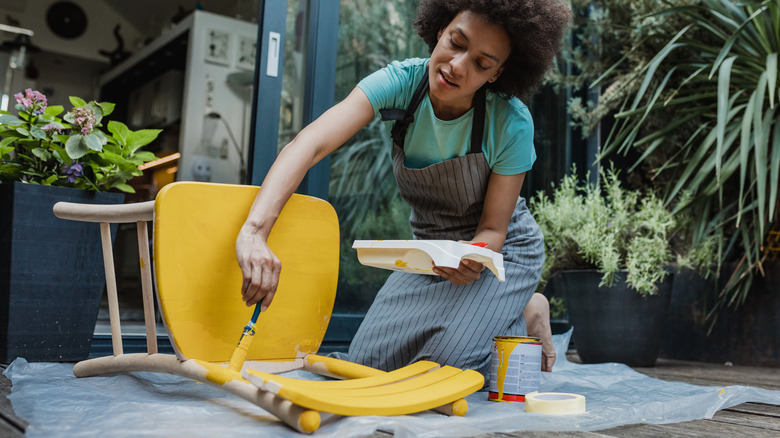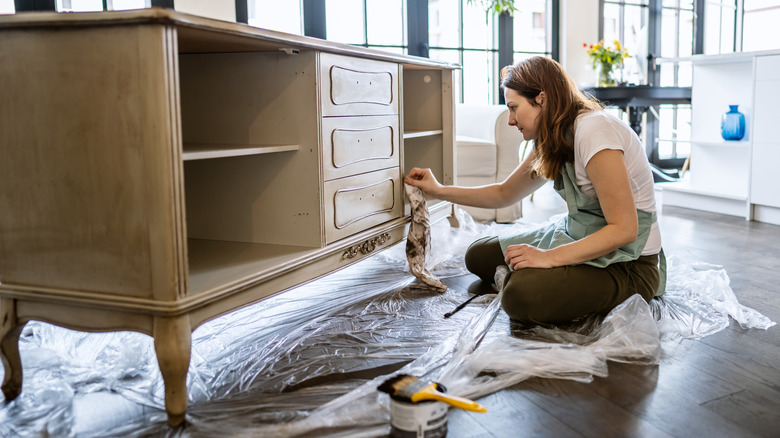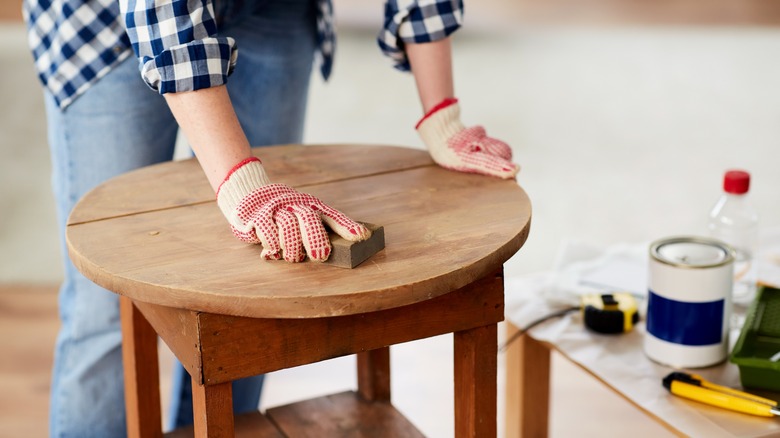How To Determine The Best Primer When Painting Furniture
When it's time to undertake a furniture redesign, it's easy to get caught up in choosing the paint color. And we get it; it's exciting to explore each color of the rainbow through paint chips. But equally important is knowing which type of primer is best suited to your project. Too often, DIYers snag up a can of primer+paint combo and get straight to work, but this can be a huge mistake. Depending on the finish and material of the piece, you can experience patchy application or cause the original finish to bleed into the paint.
To avoid this, it's important to understand what the furniture piece at hand requires; is it wood, glass, plastic, or steel? And that's not the only factor to consider when you're picking out a primer. You also want to be sure the paint type is compatible with the primer because latex and oil-based products don't always mix. Luckily, you don't have to be an amateur chemist to sort it out.
Furniture material should determine primer choice
The quickest category that will help you narrow down your primer options is to determine what the actual material of the furniture piece is. If it's metal, you'll want a primer that's suited to non-porous surfaces and something totally different in the case of wood. Find a primer that is meant to be used on the specific material of the furniture you're working on. Wood is likely the most common material you'll be painting, but there can be quite a bit of variation within that — primarily, whether the finish will bleed into the new paint. This is a common issue with red stains and finishes like cherrywood, redwood, or mahogany due to a phenomenon known as "tannin bleed." In this case, use an oil-based primer, which will create a solid barrier and prevent color bleeding and discoloration.
If you have already purchased a latex-based paint or just prefer working with it, fear not. It can be painted over oil-based primer, just not oil-based paint. If the finish of the piece you're working on is ashy to neutral-toned, you can most likely stick with a latex-based primer. If you don't have the issue of a red-toned finish, you can use whatever primer you like, so long as it's compatible with your paint choice.
When you can actually skip the primer
Okay, okay, but does priming really pay off? Furniture flippers say yes for the most part, but there are, of course, some exceptions. Chalk paint is often the go-to paint type for DIYers because its signature ultra-matte finish gives a rustic vibe to nearly any furniture piece. And the perks don't stop there — it often doesn't require a primer coat. So long as the furniture surface is neutral-toned and has been prepared properly, meaning the furniture surface is clean and smooth, you shouldn't need a primer for chalk paint. But there are exceptions even when it comes to chalk paint. They follow the same rule as any other paint; if the finish is red, use a primer. Rust-oleum recommends reaching for a shellac-based primer in this case.
While the convenience and ease of the primer-paint combos are beyond tempting, it usually isn't the right call for furniture needs. You should generally only use these in the case of repainting walls, and even then, only if the wall is without texture and not making a major color shift. Otherwise, reach for a can of primer.


